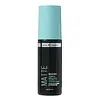Hard Candy Sheer Envy Setting Spray Versus Urban Decay All Nighter Long-Lasting Makeup Setting Spray
What's inside
What's inside
 Key Ingredients
Key Ingredients

No key ingredients
 Benefits
Benefits

 Concerns
Concerns

 Ingredients Side-by-side
Ingredients Side-by-side

Water
Skin ConditioningPolysilicone-11
Butylene Glycol
HumectantCocamidopropyl Betaine
CleansingAlcohol Denat.
AntimicrobialPvp
Emulsion StabilisingPhenoxyethanol
PreservativeEthylhexylglycerin
Skin ConditioningPotassium Sorbate
PreservativeSodium Benzoate
MaskingFomes Officinalis Extract
Skin ProtectingLaureth-12
EmulsifyingHdi/Trimethylol Hexyllactone Crosspolymer
Polyhydroxystearic Acid
EmulsifyingIsononyl Isononanoate
EmollientEthylhexyl Isononanoate
EmollientSodium Cocamidopropyl Pg-Dimonium Chloride Phosphate
CleansingOleanolic Acid
Skin ConditioningPolyurethane-35
Enantia Chlorantha Bark Extract
Skin ConditioningWater, Polysilicone-11, Butylene Glycol, Cocamidopropyl Betaine, Alcohol Denat., Pvp, Phenoxyethanol, Ethylhexylglycerin, Potassium Sorbate, Sodium Benzoate, Fomes Officinalis Extract, Laureth-12, Hdi/Trimethylol Hexyllactone Crosspolymer, Polyhydroxystearic Acid, Isononyl Isononanoate, Ethylhexyl Isononanoate, Sodium Cocamidopropyl Pg-Dimonium Chloride Phosphate, Oleanolic Acid, Polyurethane-35, Enantia Chlorantha Bark Extract
Water
Skin ConditioningAlcohol Denat.
AntimicrobialPvp
Emulsion StabilisingDimethicone PEG-7 Phosphate
CleansingPPG-3 Benzyl Ether Myristate
EmollientPolyhydroxystearic Acid
EmulsifyingDipropylene Glycol
HumectantIsononyl Isononanoate
EmollientEthylhexyl Isononanoate
EmollientCaprylyl Glycol
EmollientSodium Cocamidopropyl Pg-Dimonium Chloride Phosphate
CleansingMethyl Methacrylate Crosspolymer
Glycereth-5 Lactate
EmollientPhenylpropanol
MaskingPropanediol
SolventMethyl Diisopropyl Propionamide
MaskingSodium Hydroxide
BufferingParfum
MaskingAloe Barbadensis Leaf Juice
Skin ConditioningMaltodextrin
AbsorbentPoloxamer 407
EmulsifyingPentaerythrityl Tetra-Di-T-Butyl Hydroxyhydrocinnamate
AntioxidantTocopherol
AntioxidantPotassium Sorbate
PreservativeSodium Benzoate
MaskingWater, Alcohol Denat., Pvp, Dimethicone PEG-7 Phosphate, PPG-3 Benzyl Ether Myristate, Polyhydroxystearic Acid, Dipropylene Glycol, Isononyl Isononanoate, Ethylhexyl Isononanoate, Caprylyl Glycol, Sodium Cocamidopropyl Pg-Dimonium Chloride Phosphate, Methyl Methacrylate Crosspolymer, Glycereth-5 Lactate, Phenylpropanol, Propanediol, Methyl Diisopropyl Propionamide, Sodium Hydroxide, Parfum, Aloe Barbadensis Leaf Juice, Maltodextrin, Poloxamer 407, Pentaerythrityl Tetra-Di-T-Butyl Hydroxyhydrocinnamate, Tocopherol, Potassium Sorbate, Sodium Benzoate
 Reviews
Reviews

Ingredients Explained
These ingredients are found in both products.
Ingredients higher up in an ingredient list are typically present in a larger amount.
Alcohol Denat. is an alcohol with a denaturant property. It is created by mixing ethanol with other additives.
This ingredient gets a bad rep because it is irritating and drying - mostly due to its astringent property. Astringents draw out natural oils in tissue, constricting pores and leaving your skin dried out.
However, alcohol denat. is not all that bad.
Due to its low molecular weight, alcohol denat. tends to evaporate quickly. One study on pig skin found half of applied alcohol evaporated in 10 seconds and less than 3% stayed on skin.
This also helps other ingredients become better absorbed upon application.
Studies are conflicted about whether this ingredient causes skin dehydration. One study from 2005 found adding emollients to propanol-based sanitizer decreased skin dryness and irritation. Another study found irritation only occurs if your skin is already damaged.
Small amounts of alcohol are generally tolerated by oily skin or people who live in humid environments.
The rule of thumb is if this alcohol is near the end of an ingredients list, it will probably not affect your skin much.
Also...
This ingredient has antimicrobial and solvent properties.
The antimicrobial property helps preserve products and increase their shelf life. As a solvent, it helps dissolve other ingredients.
Other types of astringent alcohols include:
Learn more about Alcohol Denat.We don't have a description for Ethylhexyl Isononanoate yet.
Isononyl Isononanoate is a synthetic skin-conditioner and texture enhancer. It is created from nonanoic acid, a fatty acid found in cocoa and lavender oil.
As an emollient, Isononyl Isononanoate helps keep your skin soft and smooth. This is because emollients create a barrier on the skin to trap moisture in.
Isononyl Isononanoate helps give products a velvet feel and improves spreadability.
Learn more about Isononyl IsononanoatePolyhydroxystearic Acid is a soft wax made from castor oil.
It is is a texture thickener, emulsifier, and film-former. Emulsifiers prevent ingredients from separating, such as oils and waters.
Polyhydroxystearic Acid may not be fungal acne safe.
Learn more about Polyhydroxystearic AcidPotassium Sorbate is a preservative used to prevent yeast and mold in products. It is commonly found in both cosmetic and food products.
This ingredient comes from potassium salt derived from sorbic acid. Sorbic acid is a natural antibiotic and effective against fungus.
Both potassium sorbate and sorbic acid can be found in baked goods, cheeses, dried meats, dried fruit, ice cream, pickles, wine, yogurt, and more.
You'll often find this ingredient used with other preservatives.
Learn more about Potassium SorbatePvp is a water-soluble synthetic polymer and common hairstyling ingredient. It is a film-forming ingredient and used to "hold" specific shapes of hair.
Pvp is less effective in high-humidity. It tends to draw moisture, but this moisture dismantles the structure and "hold".
Sodium Benzoate is a preservative. It's used in both cosmetic and food products to inhibit the growth of mold and bacteria. It is typically produced synthetically.
Both the US FDA and EU Health Committee have approved the use of sodium benzoate. In the US, levels of 0.1% (of the total product) are allowed.
Sodium benzoate works as a preservative by inhibiting the growth of bacteria inside of cells. It prevents the cell from fermenting a type of sugar using an enzyme called phosphofructokinase.
It is the salt of benzoic acid. Foods containing sodium benzoate include soda, salad dressings, condiments, fruit juices, wines, and snack foods.
Studies for using ascorbic acid and sodium benzoate in cosmetics are lacking, especially in skincare routines with multiple steps.
We always recommend speaking with a professional, such as a dermatologist, if you have any concerns.
Learn more about Sodium BenzoateWe don't have a description for Sodium Cocamidopropyl Pg-Dimonium Chloride Phosphate yet.
Water. It's the most common cosmetic ingredient of all. You'll usually see it at the top of ingredient lists, meaning that it makes up the largest part of the product.
So why is it so popular? Water most often acts as a solvent - this means that it helps dissolve other ingredients into the formulation.
You'll also recognize water as that liquid we all need to stay alive. If you see this, drink a glass of water. Stay hydrated!
Learn more about Water